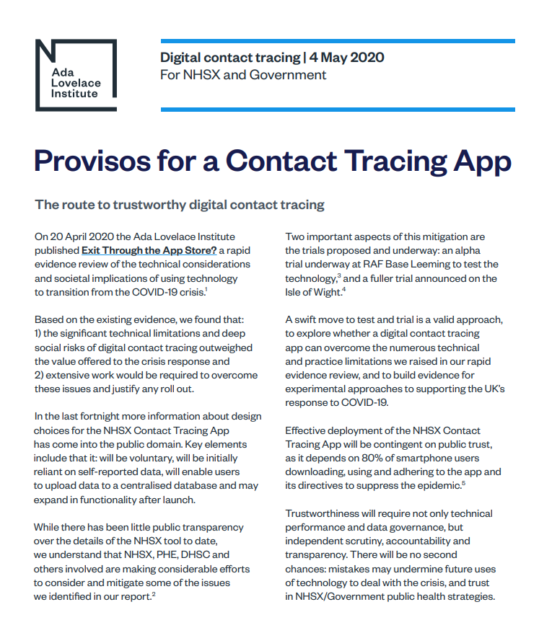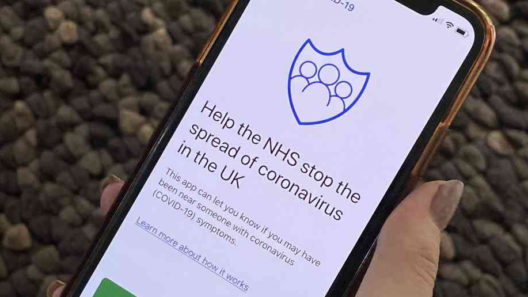Provisos for a contact tracing app
The route to trustworthy digital contact tracing
An update to the COVID-19 rapid evidence review: Exit though the App Store?
4 May 2020

The UK Government is building momentum around roll out of a Contract Tracing App in two-to-three weeks. What are the milestones they would have to meet before roll-out to ensure the app is safe, fair and equitable?
Building on the Ada Lovelace Institute rapid evidence review Exit through the App Store? published on 20 April, Provisos for a Contact Tracing App articulates the technical and practical limitations that would have to be overcome, and the policy and scrutiny measures that would have to be in place, before a contact tracing app is rolled out in the UK.
Provisos for a Contact Tracing App argues that – while NHSX is right to undertake research and testing to consider whether this technology could be a valid part of any measures to transition from lockdown – if the Government launches an ineffective app or untrustworthy app, it will not be adopted, is unlikely to be effective and could even be actively harmful to people’s health and trust.
To date, the additional information does not answer the concerns we raised in our initial report, nor change our recommendation that there is not yet the evidence and justification for an imminent national roll out.
While we welcome evidence to the contrary, we currently see no evidence for a scenario where the app will be able to trace contact to a high degree of accuracy and command the high levels of use and adherence needed for it to be a central pillar in the Government’s public health strategy, to be relied on to keep people safe.
Before any national roll out, NHSX and Government must demonstrate whether an app can be a safe, effective, supportive additional element to a broader public health strategy.
Since publication of Exit through the App Store? more information has come into the public domain about the design choices being made for the NHSX Contact Tracing App. Important characteristics include that:
- it will be voluntary
- it will reliant on self-reported data (with the option of later adding test results to confirm or dismiss the self-diagnosis)
- it will enable users to voluntarily upload data to a centralised NHSX database
- it may expand in functionality after launch.
While there is only limited public transparency about the details of the tool and NHSX’s approach to date, we understand that NHSX, PHE, DHSC and others have parallel workstreams to consider some of the issues identified in our report.
The Government are building momentum on having the app tested and ready for national roll out in mid-May. This paper outlines some of the key milestones that would need to be achieved before roll out for the app to be viable, safe, effective and trustworthy.
A key theme running through all the steps is the need for greater transparency and honesty with the public about the ethical concerns and technical limitations. These important concerns will determine how much faith the public understand they should put in this app.
The risk is not just that the public lose faith in this app to support the health crisis, it could undermine trust in public health initiatives and Government strategy more broadly.
Related content

Turn it off and on again: lessons learned from the NHS contact tracing app
The decision to delay the app’s launch is the right one.